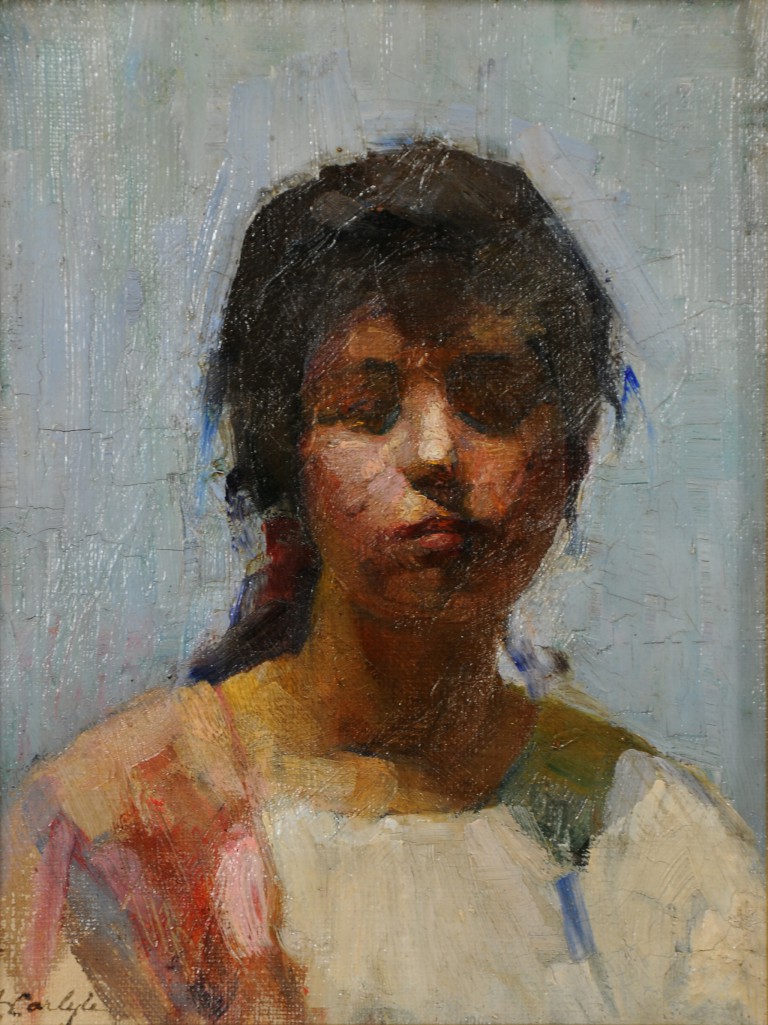
Florence Carlyle, born in Galt, Ontario, in 1864, stands out as one of Canada’s prominent female artists of the late 19th and early 20th centuries. Her journey from a small town in Ontario to the art academies of Paris, and later to international recognition, showcases her exceptional talent and determination.
Early Life and Education
Florence was the daughter of William Carlyle, a public school inspector and the nephew of the British historian Thomas Carlyle. Her family moved to Woodstock when she was three years old. Florence showed an early interest in art, which her mother encouraged by organizing an art class taught by the Canadian-born artist Paul Peel. Impressed by Florence's talent, Peel urged her to pursue further studies in Paris.
Studies in Paris
In the late 1880s, Carlyle traveled to Paris with Paul Peel and his sister Mildred. She studied at various art academies under notable artists such as T. Robert-Fleury, Jules Lefebvre, and Adolphe W. Bouguereau. During her six years in Paris, Carlyle honed her skills and exhibited her work at the Canadian Section of the Chicago World's Fair, where she won a silver medal in 1893.
Return to Canada and Teaching
Upon returning to Canada in 1896, Carlyle taught art at Havergal College in Toronto and established studios in London, Ontario, and Woodstock. She gained recognition for her landscapes, figure studies, and domestic interiors. Critics lauded her work, with E.F.B. Johnston in 1914 describing her as a "brilliant and facile painter" whose art demonstrated "talent of a high order."
Membership and Exhibitions
In 1897, Carlyle became one of the few women members of the Royal Canadian Academy of Arts (ARCA). She spent the summer of that year painting the mountainous landscapes of British Columbia with the Canadian Alpine Club. Her career continued to flourish as she opened a studio in New York in 1899, where she found a receptive market for her work. Carlyle frequently traveled between Europe and North America, exhibiting and painting until 1912.

World War I and Later Years
In 1913, Carlyle moved to Crowborough, Sussex, England. With the outbreak of World War I, she worked in hospitals in France until her health deteriorated. She then converted her studio into a rest home for nurses and sold many of her paintings to benefit the Red Cross. After the war, Carlyle joined the Land Army and later took up writing, although she never returned to painting with the same intensity.
Legacy and Recognition
Florence Carlyle's contributions to art were significant. Her painting The Threshold (1912), depicting a bride in her home, was purchased by the Ontario Government and remains a testament to her skill in handling interior scenes. Her works are part of prestigious collections, including the National Gallery of Canada, which holds her paintings Grey and Gold and Afternoon, Venice. Carlyle’s portrait of Lady Drummond is displayed in the Parliament Buildings in Ottawa.
Her impact on Canadian art was celebrated with a memorial exhibition and sale of 86 of her works at the Jenkins Art Galleries in Toronto in 1925. Despite facing the challenges of being a female artist in a predominantly male field, Florence Carlyle's legacy endures, inspiring future generations with her dedication and artistic vision.
Browse our collection of Canadian paintings for sale at the Canadian Classic Fine Art gallery, The best place to buy a painting online. We provide free shipping anywhere in Canada and the United States. Our Montreal art gallery sells paintings online exclusively and have a 14 days return policy.
